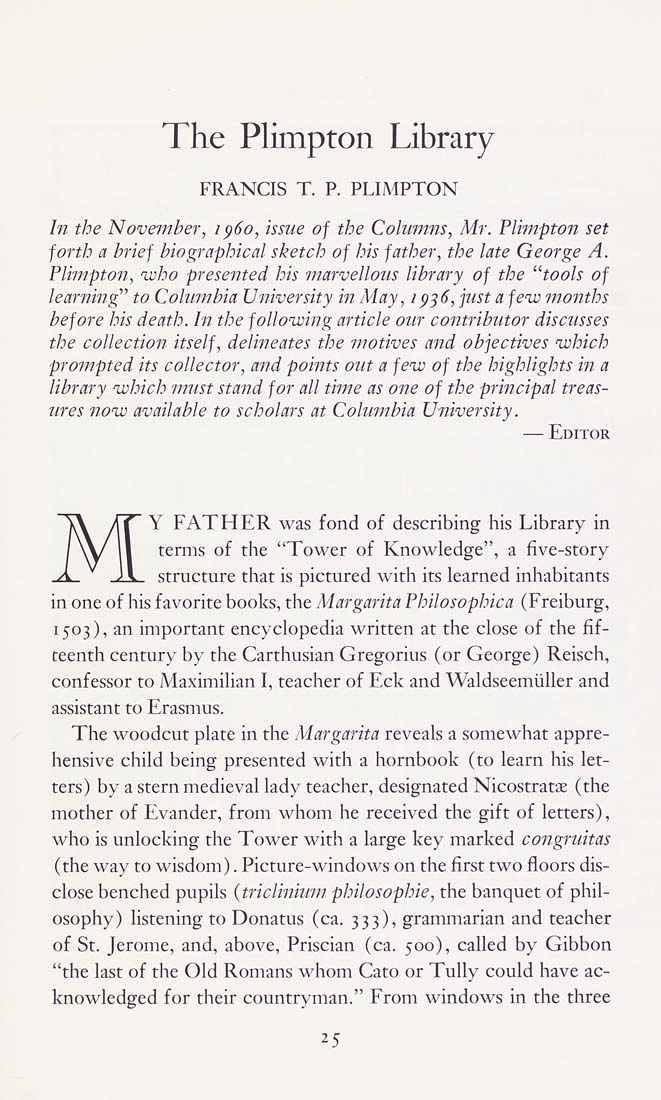Columbia Library columns (v.10(1960Nov-1961May))
(New York : Friends of the Columbia Libraries. )
|
||
|
|
|
|
| v.10,no.2(1961:Feb): Page 25 |

The Plimpton Library
FRANCIS T. p. PLIMPTON
In the November, 1^60, issue of the Columns, Mr. Plimpton set
forth a brief biographical sketch of his father, the late George A.
Plimpton, who presented his marvellous library of the "tools of
learning" to Columbia University in May, i^^6, just a few months
before his death. In the following article our contributor discusses
the collection itself, delineates the motives and objectives which
prompted its collector, and points out a few of the highlights in a
library which must stand for all time as one of the principal treas¬
ures now available to scholars at Columbia University.
— Editor
M'
Y FATHER was fond of describing his Library in
terms of the "Tower of Knowledge", a five-story
structure that is pictured with its learned inhabitants
in one of his favoiite books, the Margarita Philosophica (Freiburg,
1503), an important encyclopedia written at the close of the fif¬
teenth century by the Caithusian Giegoiius (or Geoige) Reisch,
confessor to Maximilian I, teacher of Eck and Waldseemiiller and
assistant to Erasmus.
The woodcut plate in the Margarita reveals a somewhat appie-
hensive child being presented with a hornbook (to learn his let¬
ters) by a stem medieval lady teacher, designated Nicostratx (the
mother of Evander, from whom he received the gift of letters),
who is unlocking the Tower with a large key marked congruitas
(the way to wisdom). Picture-windows on the first two floors dis¬
close benched pupils {triclinitim philosophic, the banquet of phil¬
osophy) listening to Donatus (ca. 333), grammarian and teacher
of St. Jerome, and, above, Priscian (ca. 500), called by Gibbon
"the last of the Old Romans whom Cato or TuUy could have ac¬
knowledged for theif countiyman." From windows in the three
25
|
| v.10,no.2(1961:Feb): Page 25 |







